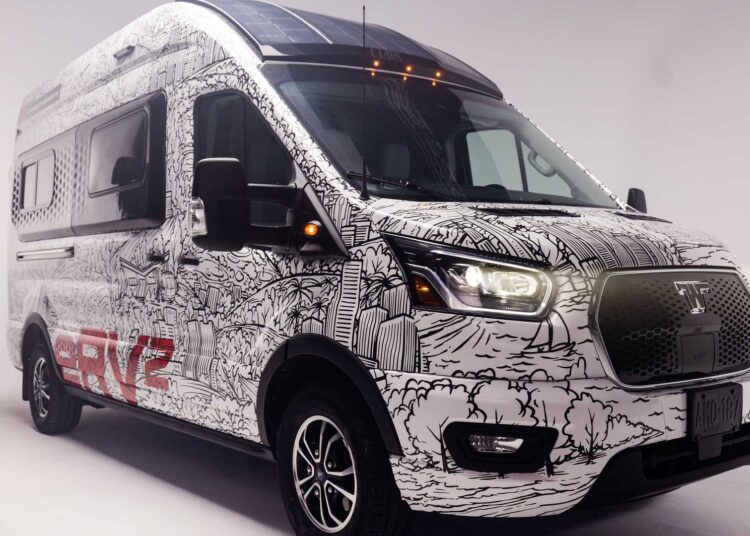Much like the automotive industry in general, electric powertrains seem to be a major part of the future for motorhomes. At this year’s Florida RV SuperShow in Tampa, Winnebago unveils the eRV2 as its latest concept for the zero-emissions camper.
The eRV2 uses a Ford E-Transit as a starting point. Winnebago covers the van in a wrap showing various places in North America and things to do with an electric RV.
25 Photos
Like most motorhomes, the really special things about the eRV2 are on the inside. Winnebago packs the interior of all of the amenities of a traditional camper, but everything runs on electricity. The company partners with Lithionics Battery for a 15 kilowatt-hour, 48-volt pack that fits underneath the floor. There’s also a 900-watt solar panel array on the roof for charging this battery while off the grid.
According to Winnebago’s estimates, the eRV2 offers enough power for seven days’ worth of off-grid camping for two people. To make this possible, the company figures the solar cells would need at least four hours of full sunlight per day. The campers wouldn’t be able to use the air conditioning or heater. However, they could cook meals, take showers, run the refrigerator, and operate the roof fan overnight.
The eRV2 cabin uses lots of recycled and renewable materials. Repreve fabric from recycled plastic bottles covers the lounge spaces. The countertops are a type of acrylic from a biodegradable substance.
For working from the road, there are two workspaces inside the eRV2. They have built-in charging points. There’s also a Wi-Fi router on board.
Winnebago is clear that the eRV2 is purely a concept for now. This version of the E-Transit only has a 108-mile (174-kilometer) range, and the company believes a commercial version of this product needs to go farther. Ideally, it wants an owner to go three hours of driving between charges.
However, Winnebago is launching a pilot program where people can test drive the eRV2 and give the company feedback to improve the vehicle. The test is focusing on Florida, California, and Washington state.
Read the full article here

























